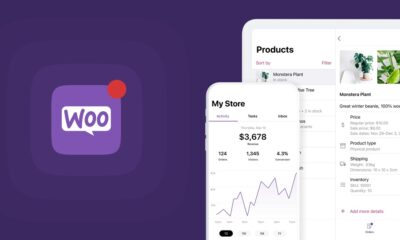Technology
Angular Tools to Monitor Performance


Angular is a popular JavaScript framework for building modern web applications. Its popularity stems from its ability to develop complex applications with ease, modular architecture, and the convenience of utilizing TypeScript. While Angular provides a rich user experience, it is essential to ensure that the application is optimized for performance to avoid slow-loading pages and poor user experiences.
If you’re working on an Angular application, ensuring that it performs optimally is essential for a great user experience. Performance monitoring tools play a crucial role in helping developers identify and resolve performance issues in their Angular applications. With the right tools, you can quickly identify performance bottlenecks and implement fixes to improve the speed and reliability of your application.
In this blog, we will discuss some of the best tools for monitoring Angular application performance. We will explore how these tools can help you identify and analyze critical performance metrics, including page load time, server response time, and client-side performance. By leveraging these tools, you can gain a deeper understanding of how your application performs and optimize it to deliver a seamless user experience.
Whether you’re building a new Angular application or maintaining an existing one, this blog will provide you with valuable insights into performance monitoring and optimization. From profiling to track, we’ll cover everything you need to know about Angular performance monitoring tools to help you build high-performing and reliable applications.
Built-in Angular Tools For Performance Monitoring
Angular provides several built-in tools for performance monitoring in its ecosystem. These tools help developers to profile, optimize and debug their applications effectively.
- Angular CLI: The Angular Command-Line Interface (CLI) is a powerful tool for building and testing Angular applications. It provides essential features for performance monitoring, such as generating performance budgets, generating code coverage reports, and performing bundle analysis.
- Angular Performance Explorer: The Angular Performance Explorer is a graphical interface that provides real-time insights into the performance of Angular applications. It helps developers to analyze network requests, JavaScript execution, and rendering performance. Developers can also compare performance metrics across different builds to track progress.
- Angular Augury: Angular Augury is a Chrome extension that provides a visual representation of an Angular application’s component tree. It allows developers to identify performance issues by analyzing the application’s state and change detection mechanism.
Third-Party Tools For Performance Monitoring
In addition to Angular’s built-in tools, several third-party tools are available to help developers monitor and optimize their application’s performance.
- Google Chrome DevTools: Google Chrome DevTools is a popular web development tool among angular js development services provider companies that provides a suite of features for performance monitoring. It enables developers to measure network performance, profile JavaScript execution, analyze rendering performance, and simulate network throttling.
- Lighthouse: Lighthouse is an open-source tool for auditing web pages. It provides a comprehensive analysis of a web page’s performance, accessibility, and best practices. It is a useful tool for optimizing Angular applications for search engines.
- Sentry: Sentry is a performance monitoring tool that provides real-time insights into application performance issues. It allows developers to track errors, monitor user sessions, and analyze application performance.
- New Relic: New Relic is a performance monitoring tool that provides end-to-end visibility into application performance. It allows developers to monitor web and mobile applications, identify performance bottlenecks, and optimize performance.
Best Practices for Performance Monitoring in Angular Applications
As we know nowadays clients have various front-end frameworks services available to develop their web applications like Angular, Vue, Svelte, JQuery, Bootstrap, React Js development services, etc. Angular is counted among the most popular front development frameworks for building web applications, and as with any application, it’s important to ensure that it performs optimally. Performance monitoring in Angular applications can help you identify and fix issues that can negatively impact the user experience. Here, we will discuss some best practices for performance monitoring in Angular applications.
Firstly, it’s important to set performance benchmarks to measure against. You can use tools such as Google Lighthouse to measure key performance metrics such as page load time, time to interact, and first contentful paint. These metrics will help you identify areas for improvement and track the progress of your optimization efforts.
Secondly, it’s important to use a performance monitoring tool to track your application’s performance in real time. There are several options available, including Google Analytics and New Relic. These tools allow you to monitor key metrics such as CPU usage, memory usage, and network latency. They also provide detailed insights into the performance of individual components and can help you identify performance bottlenecks.
Thirdly, it’s important to optimize your code for performance. This includes minimizing the use of expensive operations, reducing the size of your JavaScript files, and optimizing images and other media files. Additionally, you should ensure that your application is running the latest version of Angular, as each new release often includes performance improvements.
Finally, it’s important to regularly test your application’s performance to ensure that it continues to meet your performance benchmarks. You can use tools such as WebPageTest to test your application’s performance under different network conditions and identify areas for improvement. By following these best practices, you can ensure that your Angular application is performing optimally and delivering a great user experience.
Conclusion
In conclusion, monitoring the performance of your Angular application is crucial to ensure that it delivers a great user experience. By using performance monitoring tools, setting performance benchmarks, optimizing your code, and regularly testing your application’s performance, you can identify and fix issues that can negatively impact the user experience.
Some popular performance monitoring tools for Angular include Google Analytics, New Relic, and AppDynamics. These tools provide real-time monitoring of key performance metrics, such as CPU usage, memory usage, and network latency. They also offer insights into the performance of individual components and can help you identify performance bottlenecks.
To optimize your code for performance, it’s important to minimize the use of expensive operations, reduce the size of your JavaScript files, and optimize images and other media files. Additionally, you should ensure that your application is running the latest version of Angular, which often includes performance improvements.
By following best practices for performance monitoring in Angular applications, you can ensure that your application is performing optimally and delivering a great user experience. So, whether you’re building a new Angular application or maintaining an existing one, make sure to prioritize performance monitoring and optimization.
Author Bio
Deepali Gupta is a Front-End Developer at Devstringx Technologies, a top angular & ReactJs development company in India. She has 03-year experience in Angular and ReactJs web development. Based on her experience in the IT industry she is very technical and good at handling complex logical challenges and attractive UI for web applications.





 Technology2 months ago
Technology2 months agoWhy Adding Videos to WooCommerce Product Galleries is Essential in 2025



 General2 months ago
General2 months agoWhat Is Smart Construction? A Beginner’s Guide



 Technology1 month ago
Technology1 month agoHow to Send WooCommerce SMS Notifications for Orders



 Technology1 month ago
Technology1 month ago7 Essential TikTok Metrics to Track for Higher TikTok Views in 2025

 Model3 weeks ago
Model3 weeks agoTiffany Stratton: Biography, Wiki, Age, WWE Career, Net Worth, Before Fame, Boyfriend





 Technology4 weeks ago
Technology4 weeks agoTop 5 Tips for Using File Uploads in Your WooCommerce Store Efficiently

 Technology3 weeks ago
Technology3 weeks agoWhy Airlines Are Using Virtual Reality Services for Pilot Training



 General4 weeks ago
General4 weeks agoThe Hidden Costs of a DUI & How a Lawyer Can Help You Avoid Them




You must be logged in to post a comment Login